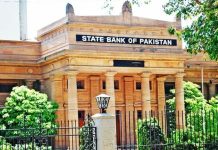ISLAMABAD: Pakistan can earn a fortune by conserving and promoting the Buddha caves and the attached garden of sage (Sadu da Bagh). The ancient honeycomb of Buddha caves is a great repast for tourists and archaeologists around the globe.
This centuries-old wonder is located in Shah Allah Ditta village in Islamabad. From Hindu and Buddhist trails to the Mughal conquests, the place remained the cradle of multi-religious and social activities.
In a discussion with WealthPK, former assistant director of archaeology (Islamabad) Dr. Mehmood Hussain Shah said, “Buddha caves in Islamabad are the natural formations which came into being as result of erosion in a series of caves, terraces and small tunnels. This erosion was caused by the rainwater.”
Pakistan’s legendary archaeologist Dr. Ahmad Hassan Dani named the place the Buddha caves. Before the partition, Hindu community lived here and in the surrounding areas. This place was the property of a Hindu named Sadhu. In the same way, a garden was also attached at the foot of Buddha caves. Dr. Ahmad named it Sadhu da Bagh. After the partition, Hindus left the place and now it is the property of the Evacuee Trust Property Board (ETPB).
No one ever resided in the Buddha caves but it was a regular sacred place for multiple communities and religions i.e., Hindus, Buddhists, and Muslims in different periods. The remains of performed rituals and sacred images are found here but no signs of any type of regular temple are still traced. As the place was close to the Taxila valley, once a center of Buddhist civilization, mostly monks, travellers, traders, and conquerors used this place as a regular path and a temporary dwelling. It was on the way to a busy trade route joining Taxila with the outer world. It can be considered a branch of the Silk Road.
Dr. Mehmood Hussain discussed the remains of a step well built by Sher Shah Suri discovered in the surrounding hills. Mughals also constructed a regular water pond here during their reign. A small mosque constructed by the Muslim conquerors is also located there. A Buddhist stupa is also situated in the nearby hills.
The area in which the stupa is found is called Bun Faqeeran about two kilometres above the caves. From there, a torrent of water used to flow toward the caves and garden. He also discussed the efforts of Dr. Hassan to stop the stone crushing machines from operating in the surrounding hills to save this archaeological asset.
Talking to WealthPK, Muhammad Ismael Abbasi, a tea house owner and self-appointed custodian of Buddha caves said, “The area of caves spans over 45,740.008 sq. feet. There is also a historical garden named ‘’Sadhu da Bagh’ in the local language. It is located at the foot of caves and spans an area of 92,765 sq. feet. A forest with the attached garden covers an area of around 4,356,000 sq. feet.”
Once, the surroundings of the caves were the living place of the Buddhist community and the platform attached to the caves was used as the community gathering place. Before Buddhists, it was also a sacred place for the Hindu community. We can hear tales about stay of Hindu Lord Ram, his wife Sita, and his brother Lakshman at the place during their 14 years of exile. A natural underground spring of ancient times is also found here. It was also considered the holy water spring for both Hindu and Buddhist orthodox. They used to perform many rituals with this aquifer. The spring still irrigates a vast area.
According to Ismael, Dr. Ahmad Hassan Dani was the first-ever archaeologist who started work at these ruins. He started his work in 1994. After 2004, the place gradually became famous as an archaeological asset.
He also said that after the partition, the place belonged to his family and they were interested in restoring it as an archaeological site. He also reproached the Capital Development Authority (CDA) for ruining the garden and the forest attached to it.
‘’They never stopped the mafia from blasting the hills to get crushed stone for the construction purpose. Now, an old mango tree is the only remnant of Sadhu da Bagh.’’
Pakistan must focus on conserving the historic value of this place. As a sacred place for the communities of multiple religions, a communal place attached to it can be constructed. A meditation hall should also be built to keep the memories of monks, gurus, and saints. It will help save a period covering centuries’ (about 2500 years). Pakistan can not only add another page to its book of heritage, but can also help uplift the tourism industry.






